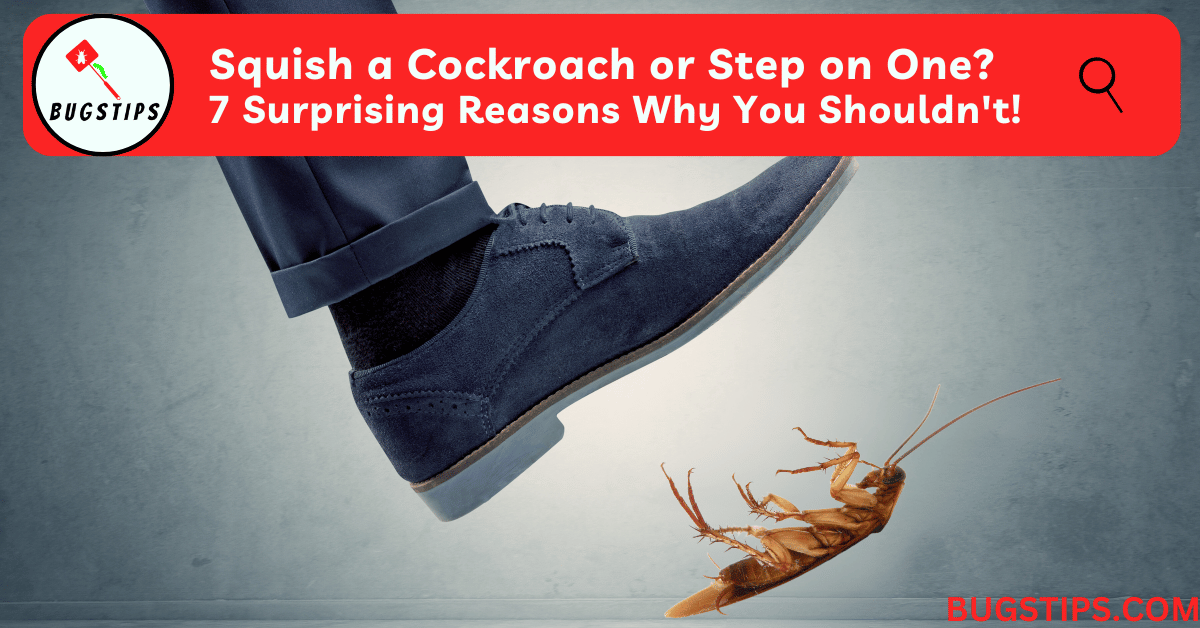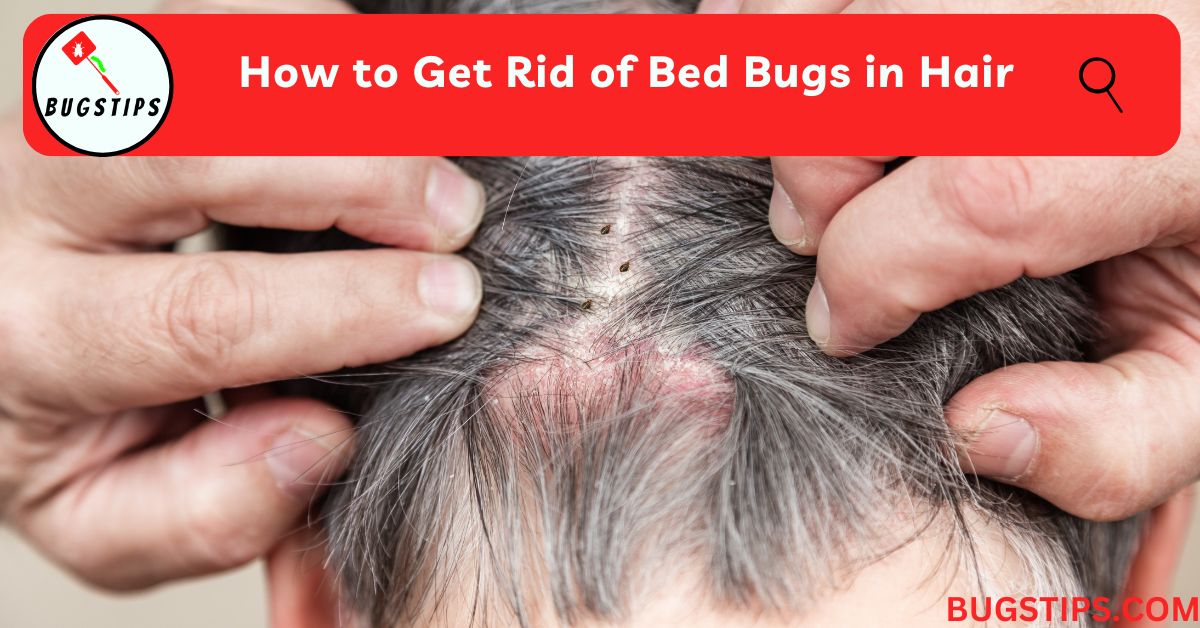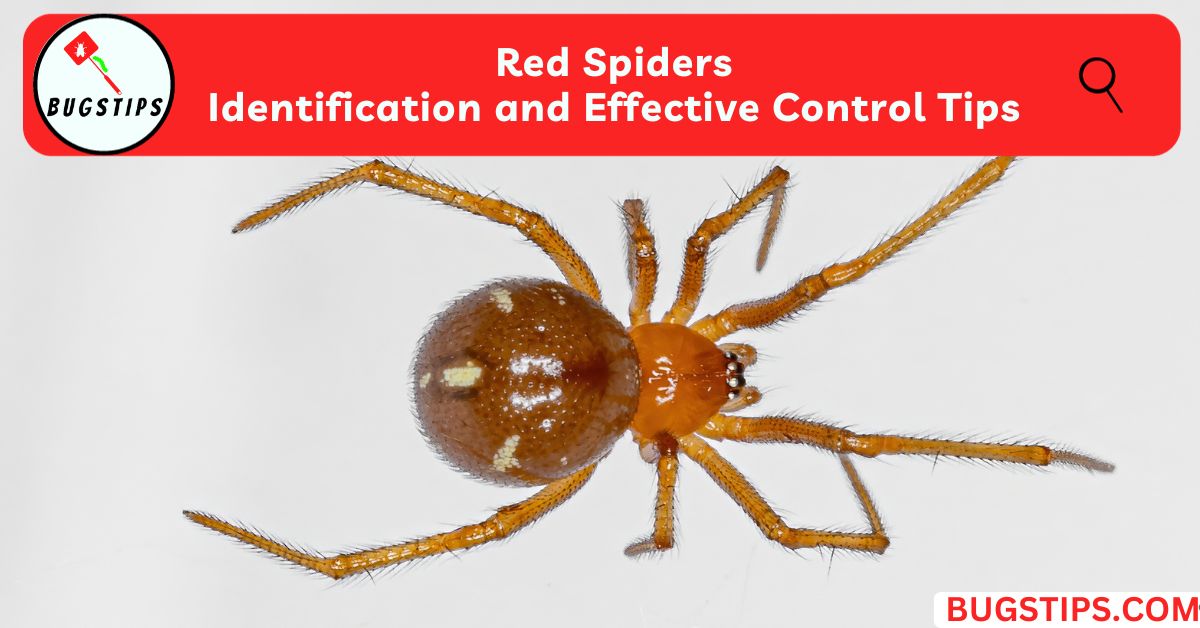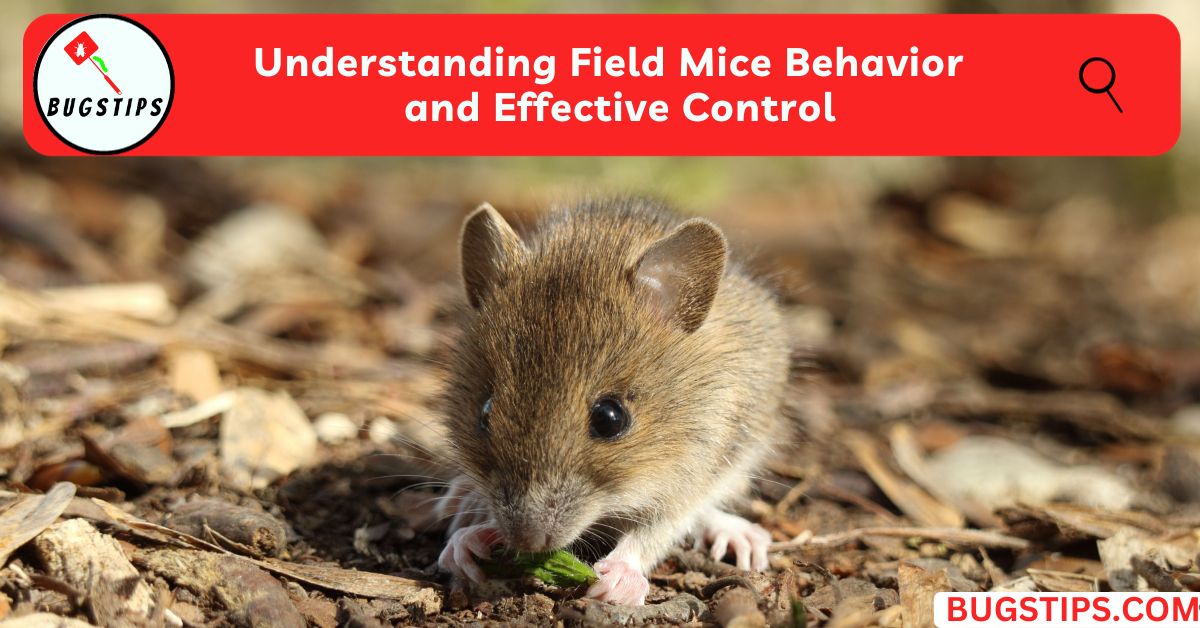This post may contain affiliate links which means as an Amazon Associate, this site may earn a small commission on qualified purchases made through links at no extra cost to you. Learn more on Affiliate Disclosure
Have you ever found yourself faced with the problem of a cockroach in your home? If so, you may have considered squishing it as a solution. Squishing a cockroach is a common method used to control their population, but is it really the best solution?
In this article, we will explore the topic of squishing cockroaches in more detail. We will answer some of the most common questions about this topic, including what happens when you squish a cockroach, why it may not be a good idea, and whether or not it is harmful.
We will also delve into some of the interesting and lesser-known aspects of squishing cockroaches, such as whether or not they produce a bad smell when squished and whether or not squishing a cockroach attracts more of them.
By the end of this article, you will have a better understanding of the effects of squishing a cockroach, as well as alternative methods for controlling their population. So, let’s get started.
Can You Squish a Cockroach?
It is possible to squish a cockroach if you apply enough pressure.
The exoskeleton of a cockroach is designed to protect it from damage and to provide support for its body. This exoskeleton is made up of several layers, including a hard outer layer and a softer inner layer. When you apply pressure to a cockroach, the exoskeleton will typically crack or break, which can cause the cockroach to die.
It is worth noting, however, that squishing a cockroach is not always easy. Cockroaches are quick and agile, and they have a tendency to scurry away when they sense danger. In addition, they can often fit into small spaces and crevices, which can make them difficult to catch.
So while it is possible to squish a cockroach, it may not always be the most effective method for controlling their population. In the following sections, we will explore some of the reasons why squishing a cockroach may not be a good idea, as well as the potential harm that can result from this action.
How to Squish a Cockroach (Not Recommended)
As pest control professionals, we do not recommend or provide instructions for harming any living creatures, (including pests.) There are humane ways to deal with a cockroach problem, such as using traps, baits, or natural repellents. If you are struggling with a cockroach infestation, we recommend seeking the help of a licensed pest control specialist.
Related Article – How to Get Rid of Cockroaches Without Killing Them
However, in this article, we aim to provide detailed answers and explanations regarding all things related to squishing a cockroach.
We understand that some people may choose to use this method as a means of controlling cockroaches, and we want to provide accurate information to ensure that they can do so safely and effectively.
If you do decide to squish a cockroach, it is important to do so carefully and with the right tools. A shoe or rolled-up newspaper may be effective, but it is important to make sure that you are not putting yourself or others at risk in the process.
It is also worth noting that squishing a cockroach can be messy, and it may not always be possible to get rid of all the remnants of the cockroach. This can lead to unpleasant odors or attract other pests, such as flies or ants.
How much pressure does it take to crush a cockroach?
Research has shown that it takes around 900 times the cockroach’s body weight in pressure to crush it. For example, if a cockroach weighs 1 gram, it would take approximately 900 grams of pressure to crush it. This means that a cockroach is relatively durable and can withstand a significant amount of force before being squished.
The reason for this is the exoskeleton that covers the cockroach’s body. This exoskeleton is made of chitin, which is a tough and flexible material that provides support and protection. The exoskeleton is divided into segments and is connected by flexible joints, allowing the cockroach to move and bend its body.
However, it’s important to note that the amount of pressure required to crush a cockroach can vary depending on factors such as the size and species of the cockroach. Some species may have thicker exoskeletons than others, making them more difficult to crush.
While it may be possible to squish a cockroach with your shoe or a heavy object, it can take a significant amount of force to do so.
So squishing a cockroach may seem like a quick and easy solution, but there are other methods of controlling their population that may be more effective and humane.
What Happens When You Squish a Cockroach?
When you squish a cockroach, a few things happen. First, the exoskeleton of the cockroach will rupture, releasing its inner fluids. The amount of fluid released will depend on the size of the cockroach and the amount of pressure applied.
One of the most notable things that happen when you squish a cockroach is the release of a bad smell. Cockroaches are known to produce a pungent odor when they are squished.
This odor is caused by a mix of chemicals released from the cockroach’s body, including fatty acids and amines. The odor is thought to be a defense mechanism, deterring predators from eating them.
Other than the bad smell, when you squish a cockroach, you may also see some brown or yellowish goo come out of the cockroach’s body. This is a mixture of the cockroach’s blood and other internal fluids. The amount of fluid released will depend on the size of the cockroach and the amount of pressure applied.
When cockroaches die, they release pheromones that signal to other cockroaches that there is a dead cockroach nearby.
Related Article – What Bugs Bleed When You Kill Them?
This can attract other cockroaches to the area. It’s not entirely clear whether squished cockroaches release more pheromones than those that die of natural causes, but it’s possible that the act of squishing could cause more pheromones to be released.
And also squishing a female cockroach can cause it to release its eggs. Female cockroaches carry their eggs in a sac called an ootheca. If the ootheca is ruptured during the squishing process, the eggs will be released.
It’s important to note that not all female cockroaches carry eggs, so not every squished cockroach will release them.
So when you squish a cockroach, you can expect to see a release of inner fluids, a bad smell, and possibly some brown or yellowish goo. The act of squishing could also attract other cockroaches to the area and cause a female cockroach to release its eggs.
Why Is It Not a Good Idea to Squish a Cockroach?
Squishing a cockroach may seem like an easy and effective way to get rid of it, but it's not always the best idea. In fact, there are several reasons why you should avoid squishing a cockroach.
Squishing a cockroach can cause it to release its feces and regurgitate food. Cockroaches have known carriers of various pathogens, including bacteria and viruses, that can be harmful to human health. When a cockroach releases its feces and regurgitated food, it can spread these pathogens, increasing the risk of diseases.
Squishing a cockroach can also trigger its natural defense mechanism, which is to release an unpleasant odor. This odor is a result of the release of a chemical called “pyrazines” that cockroaches use to communicate with each other. While the odor itself is not harmful, it can be quite unpleasant and difficult to get rid of.
And also squishing a cockroach can also lead to the spread of its eggs. Cockroaches lay their eggs in hidden areas such as cracks and crevices, and squishing a pregnant female can cause the eggs to scatter and spread around your home. This can lead to an even bigger cockroach infestation.
- Squishing or stepping on a cockroach can release allergens into the air, which can trigger allergies or asthma symptoms in some individuals.
- Squishing or stepping on a cockroach can also spread bacteria and other pathogens, potentially increasing the risk of disease transmission.
- If a cockroach egg sac is squished, it can release hundreds of eggs, leading to a larger infestation.
- Cockroaches are difficult to kill due to their tough exoskeleton and fast reflexes, which can make them resilient to squishing or stepping on.
- When a cockroach is squished or stepped on, it may emit a foul odor that can linger in the area.
- The sound and sensation of squishing or stepping on a cockroach can be unpleasant for some individuals.
- If a cockroach is squished or stepped on and not disposed of properly, it may attract other pests or insects to the area.
In addition to these reasons, squishing a cockroach can also leave behind a mess that can attract other pests such as ants and flies. The remains of a squished cockroach can also stain surfaces and fabrics.
Is It Harmful to Squish a Cockroach?
As we explained earlier, squishing a cockroach is not a good idea. In addition to the potential hazards, it can also be harmful to your health.
Cockroaches are known to carry and spread various diseases, including salmonella, E. coli, and even asthma-triggering allergens.
When you squish a cockroach, it can release its bodily fluids and excrement, which can spread the pathogens it carries. These fluids can contaminate surfaces and cause infections if they come into contact with your skin or food.
Furthermore, cockroach remains can also cause respiratory problems if they are inhaled. Cockroach droppings, shed skin, and body parts can become airborne and trigger asthma attacks or cause allergic reactions in some people.
So squishing a cockroach is not only unhygienic but also poses potential health risks. It is essential to handle a cockroach infestation with proper pest control methods and maintain good hygiene practices to prevent the spread of diseases.
How Do Cockroaches Survive Being Squished?
Despite their seemingly fragile appearance, cockroaches have a unique anatomy that allows them to survive being squished.
One of the most important features is their exoskeleton, which acts as a strong protective layer. This exoskeleton is made up of multiple layers of chitin, a hard, protective material that helps to cushion their organs and tissues from damage.
In addition to their exoskeleton, cockroaches have a remarkable ability to regenerate lost limbs. This is due to their ability to undergo a process called molting, in which they shed their exoskeleton and grow a new one. During this process, their bodies also regenerate any lost limbs, making them more resilient to injury.
Related Article – How Many Legs Do Cockroaches Have?
Another factor that allows cockroaches to survive being squished is their ability to slow down their metabolism. When they sense danger or are under stress, they enter a state of torpor, where their metabolism slows down and they become less active. This state allows them to conserve energy and survive in harsh conditions.
What Happens If You Only Squish Half of a Cockroach?
If you only squish half of a cockroach, it is unlikely that it will die. This is because cockroaches have a unique ability to survive with just half of their body intact. Even if they lose their head, they can survive for up to a week before eventually dying of thirst or starvation.
Squishing only half of a cockroach can also have other consequences. For example, if you only partially squish a female cockroach, it is possible that it could still lay eggs. This can lead to continued infestation and further problems down the line.
Related Article – Can Cockroaches Live Without Heads? 10 Surprising Facts
Also squishing only half of a cockroach is not an effective method of pest control. Even if the cockroach is injured and unable to move, it is still capable of reproducing and creating more cockroaches.
In order to effectively control a cockroach infestation, it is important to use proven pest control methods that target the entire population.
What Happens When You Squish a Cockroach Egg?
When it comes to squishing a cockroach egg, it’s important to understand the potential consequences.

When the egg is squished, it will release the contents inside. This could include a large number of cockroach nymphs that are just waiting to hatch. In addition, squishing a cockroach egg can also release harmful bacteria and other pathogens that could be harmful to humans.
One of the main risks associated with squishing a cockroach egg is the potential for the release of harmful pathogens. Cockroaches are known to carry a wide range of bacteria and other harmful microorganisms that can cause illness in humans.
When you squish an egg, you could be releasing these pathogens into the air, where they can be inhaled or come into contact with your skin.
Another risk associated with squishing a cockroach egg is the potential for a large number of nymphs to hatch.
These baby cockroaches can be even harder to get rid of than adult cockroaches, as they are smaller and more difficult to detect. In addition, if you squish an egg that is located in a hard-to-reach area, such as inside a wall or behind a piece of furniture, the nymphs that hatch could be difficult to remove.
it's best to avoid squishing cockroach eggs whenever possible. Instead, focus on preventing cockroaches from laying eggs in your home in the first place. This can be done by keeping your home clean and free of food debris, sealing up cracks and crevices where cockroaches could enter, and using pest control products as needed.
Does Squishing a Cockroach Attract More of Them?
Many people believe that squishing a cockroach will attract more of them to the area, but this is actually a myth. In reality, squishing a cockroach will not attract any more of them than there were before.
The reason behind this myth is likely due to the fact that cockroaches are attracted to the same things that would cause them to be in the area in the first place, such as food or moisture. Squishing a cockroach does not release any special pheromones or scents that would attract others.
In fact, killing a cockroach can have the opposite effect of attracting more of them. When a cockroach dies, it releases a chemical signal that signals to other cockroaches that there is danger in the area. This can cause other cockroaches to scatter and avoid the area, rather than be attracted to it.
So, while squishing a cockroach may not attract more of them, it’s still not a great idea to make a habit out of it. Instead, it’s important to focus on prevention measures to avoid cockroach infestations in the first place.
What Happens When You Step on a Cockroach?
Besides squishing cockroaches, some homeowners try to step on cockroaches to kill them. When a cockroach is stepped on, there are several physical changes that occur.
First, there is a crunching sound that is produced as the cockroach’s exoskeleton is crushed. This sound can be quite loud and unpleasant for some people.
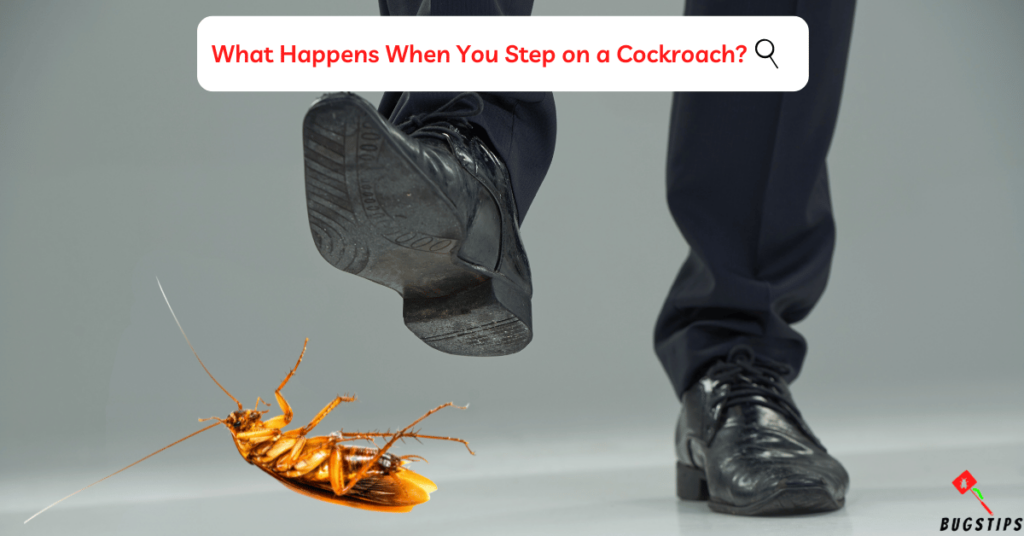
In addition to the sound, there is also a sensation that is felt when stepping on a cockroach. The pressure from the foot can be felt as the cockroach’s body is compressed. Some people find this sensation to be disturbing, while others may not notice it at all.
It is important to note that stepping on a cockroach is not always an effective method of killing it. As discussed earlier, cockroaches have a resilient exoskeleton and can survive being squished.
And if only part of the cockroach is crushed, it may still be able to survive and regenerate its lost limb.
So while stepping on a cockroach may produce a satisfying crunch, it may not be the most effective or humane way to get rid of them. Other methods such as using bait, traps, or calling a professional exterminator may be more effective and less unpleasant.
Is it Dangerous to Step on a Barefoot Cockroach?
While stepping on a cockroach with shoes on may not be harmful, doing so with bare feet can be dangerous. Cockroach remains can contain harmful bacteria and pathogens that can be spread through contact with bare skin.
These diseases can range from minor skin infections to more serious illnesses such as salmonella or E. coli.
When a cockroach is stepped on with bare feet, its remains can potentially penetrate the skin and introduce these harmful pathogens into the body. This can lead to infections and other health complications.
Therefore, it is important to take precautions and avoid stepping on cockroaches with bare feet.
So stepping on a cockroach with shoes on may be harmless, but doing so with bare feet can pose a risk of spreading harmful bacteria and pathogens. It is important to take measures to prevent cockroaches from entering your living space and to avoid stepping on them with bare feet.
Do Cockroach Eggs Stick to Your Shoe?
Cockroach eggs can stick to surfaces, including shoes if they are not properly cleaned or removed.
Cockroach eggs are encased in a protective capsule called an ootheca, which is often sticky and can adhere to surfaces. If a person steps on or comes into contact with an ootheca, it is possible for the eggs to transfer onto their shoes or clothing.
However, it is important to note that cockroach eggs are not the only potential source of contamination on shoes or clothing. It is possible for a variety of bacteria, fungi, and other pathogens to be present on footwear, particularly if they are worn in environments where contamination is likely.
To avoid potential contamination, it is important to regularly clean and sanitize shoes and other items that may come into contact with cockroach eggs or other potential sources of contamination.
Why Is It So Hard to Kill a Cockroach Even With Your Shoe?
As we explained before in the “How Do Cockroaches Survive Being Squished?” section, cockroaches are incredibly resilient creatures with tough exoskeleton that protects them from many types of physical damage. This same exoskeleton is what makes them difficult to kill even with a shoe.
When you step on a cockroach, the exoskeleton acts like a shield, absorbing much of the force and protecting the inner organs of the insect.
And cockroaches are incredibly fast, and their ability to scurry away quickly can make it challenging to get a good shot at them with your shoe.
Another reason it’s challenging to kill a cockroach with your shoe is that they are highly adaptable creatures. They have evolved to live in a variety of environments and can quickly adjust to changes in their surroundings.
This adaptability extends to their ability to survive in the face of potential threats, including human intervention.
Overall, the combination of their tough exoskeleton, speed, and adaptability makes cockroaches challenging to kill, even with a shoe.
Why Do Cockroaches Make a “POP” Sound When You Step on Them
When you step on a cockroach, you may hear a distinct “pop” sound. This sound is the result of a sudden expulsion of air from the cockroach’s body.
Cockroaches have tiny holes, called spiracles, along their body that they use for breathing. When a cockroach is stepped on, the pressure from your shoe can cause air to be forced out of these spiracles, resulting in a popping sound.
Ans the “pop” sound can also be caused by the exoskeleton of the cockroach breaking or cracking under the pressure of your shoe. Cockroaches have a hard exoskeleton to protect their soft internal organs, but this also makes them more difficult to kill.
Overall, the popping sound is the result of a combination of factors, including the expulsion of air and the cracking of the exoskeleton. While it may be satisfying to hear the sound when you step on a cockroach.
Final Thoughts
While it may be tempting to squish or step on a cockroach when you encounter one, we advise against it. Not only is it messy and potentially smelly, but it can also attract even more of these pesky critters to your home. Additionally, cockroaches are surprisingly resilient creatures and may even survive being squished or stepped on.
Instead of resorting to violence, we recommend using other methods to control and eliminate cockroach infestations, such as sealing cracks and crevices, keeping your home clean and free of clutter, and using traps or bait stations. By taking these preventative measures, you can help keep your home cockroach-free without the need to squish or step on cockroaches
Remember, squishing or stepping on a cockroach may seem like a quick fix, but it can actually create more problems in the long run. So, the next time you encounter a cockroach, try a non-violent approach instead and keep your home free of these unwanted guests.
FAQs
Is it bad to squish a cockroach?
Squishing a cockroach is not recommended as it can release bacteria and other pathogens into the air. And it can create a mess and an unpleasant odor. It is more humane and effective to use traps or call a pest control professional.
Is it bad to step on a cockroach?
Stepping on a cockroach may not be the most effective way to get rid of it, and it may also be considered inhumane. Additionally, if the cockroach is carrying any harmful bacteria or pathogens, stepping on it could potentially spread these contaminants.
Do cockroaches produce a bad smell when squished?
Yes, squished cockroaches can produce a foul odor. This odor is caused by the chemicals and compounds in the cockroach’s body.
Do squish cockroaches release pheromones when they die?
Yes, squished cockroaches can release pheromones when they die. These pheromones can attract other cockroaches to the area, potentially leading to a larger infestation.
What happens when you step on a pregnant cockroach?
Stepping on a pregnant cockroach can cause the eggs to be expelled from the cockroach’s body. This can lead to a larger infestation as the eggs can hatch and create more cockroaches.
What happens when you squish a cockroach egg?
Squishing a cockroach egg can destroy the developing embryo inside, preventing it from hatching. However, if the egg has already hatched or if there are other eggs nearby, the infestation may continue. It is recommended to use a more effective and humane method of dealing with cockroach infestations, such as traps or calling a pest control professional.
Resources – (for further reading)
Wikibooks – Wikijunior:Bugs/Cockroach
NationalGeographic – How much pressure does it take to crush a cockroach?
ScienceDirect – Water and osmotic pressure regulation in the cockroach, Leucophaea maderae

